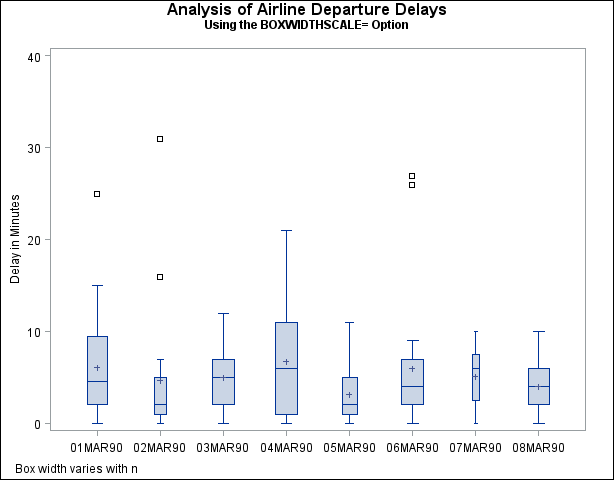
each data point in one data set is matched with exactly one point from the other set.Glossary Box plot a graph that gives a quick picture of the middle 50% of the data First Quartile the value that is the median of the of the lower half of the ordered data set Frequency Polygon looks like a line graph but uses intervals to display ranges of large amounts of data Interval also called a class interval an interval represents a range of data and is used when displaying large data sets Paired Data Set two data sets that have a one to one relationship so that: Since 25% of values fall between 31 and 38, we know that fewer than 25% fall between 31 and 35. Twenty-five percent of the values fall in the interval 38 to 41, and 25% fall between 41 and 64.

The interval from 31 to 35 years has the fewest data values.Each interval lies within a quarter, so we cannot tell exactly where the data in that quarter is concentrated. There is not enough information to tell.There seems to be approximately a 14-year difference between the median and the third quartile. The third quarter has the largest spread.There seems to be only a three-year difference between the first quartile and the median. The second quarter has the smallest spread.However, this is not a rule, because there is so much variability in each data set. Comparing the median ages, younger people tend to buy the BMW 3 series, while older people tend to buy the BMW 7 series.
#BOX AND WHISKER PLOT PERCENTAGES CALCULATOR SERIES#

To construct a box plot, use a horizontal or vertical number line and a rectangular box. We use these values to compare how close other data values are to them. A box plot is constructed from five values: the minimum value, the first quartile, the median, the third quartile, and the maximum value. They also show how far the extreme values are from most of the data. Box plots (also called box-and-whisker plots or box-whisker plots) give a good graphical image of the concentration of the data.


 0 kommentar(er)
0 kommentar(er)
